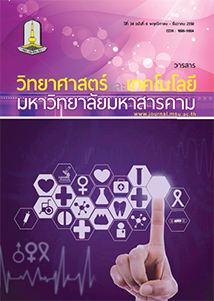Distributionsand Predictive Factorsof Malaria Risk Areas along the Thai-Myanmar Border
Main Article Content
Abstract
This study aimed to describe malaria distribution,identify the malaria risk areas, and determine thepredictive factors of malaria risk areas in 111 districts from 10 provinces along the Thai-Myanmar border. Using retrospective dataroutinely collected from 2004 to 2013 which obtained from involved organizations. Malaria distributions were analyzed by Microsoft Excel, GeoDaTM 0.9.5-I, and Quantum GIS (1.7.4) software. Malaria risk areas were classified based on the Spatial Empirical Bayesian (SEB) smoothed rates,and the predictive factors of malaria risk areas were determined by logistic regression.The results showed thattrend of malaria incidence rates were decreased. Most of malaria cases were reported fromMarch to June and the highest peak was in 2010.There were 62 malaria high risk districts in which majority of them were the connected territory districts with Myanmar. The statistically significant predictive factorsof malaria risk areas were proportion of aged lower than 25 years old, population density, migrant workers, average temperature, and average rainfall(p<0.05). Thosepredictive factorscould explain the high risk areas by 76.60%. The finding were useful for identification of specific target areas forplanning, resource allocation, surveillance, and preparednessfor malaria preventionand control.
Article Details
Section
Original Articles


